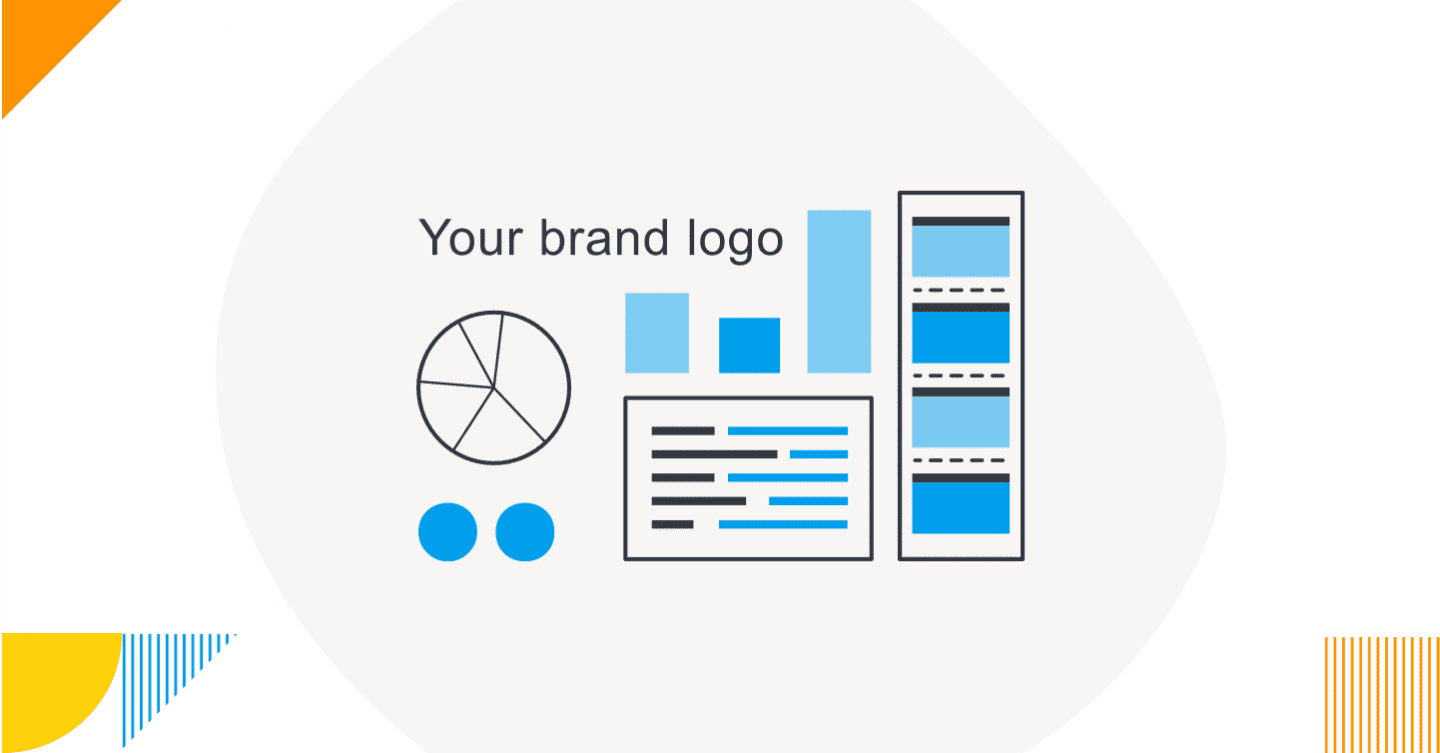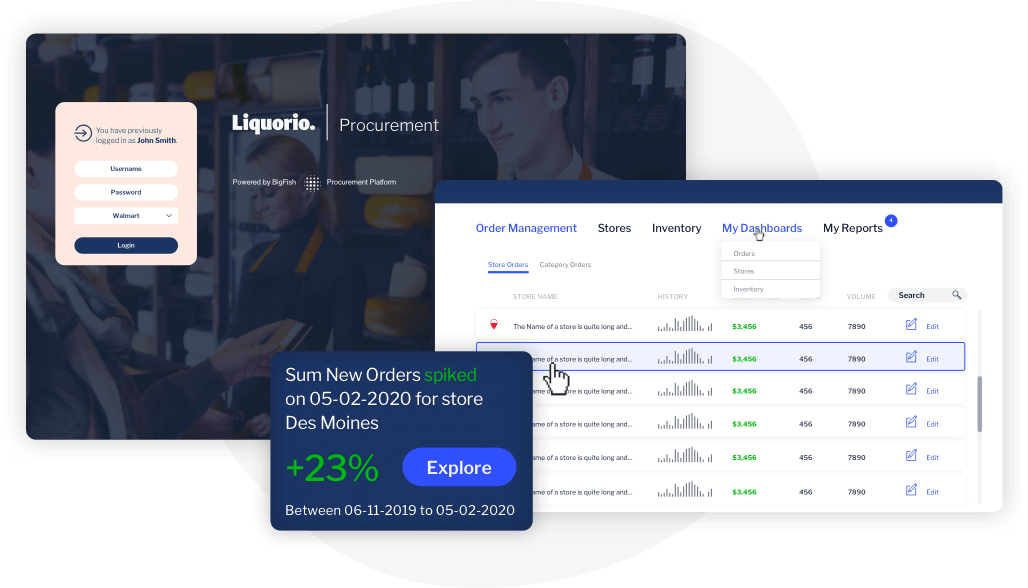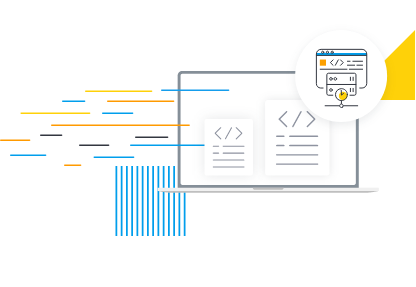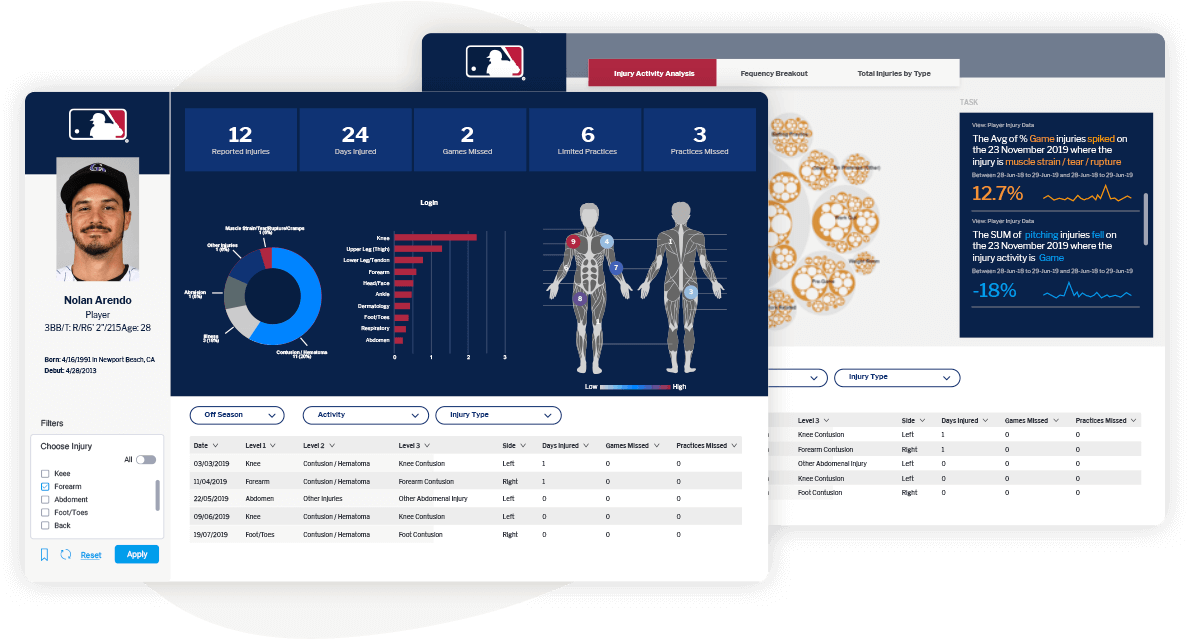
White Label Analytics: What It Is, Why It Matters & 5 Key Benefits
A key consideration when buying an embedded analytics solution is not only whether it supports embedding of charts and reports, but that it can integrate analytics in a way that is indistinguishable from the experience of your application. Learn what white-label BI is.
Today’s best embedded business intelligence (BI) platforms support the ability to freely customize and rebrand the user interface (UI) to seamlessly blend analytics with your own software and brand identity, rather than stick out like a third-party add-on. This capability is referred to as white-label analytics, and it's a feature that's still not quite clear for many businesses looking to buy rather than build analytics into their software.
So, what is white label analytics? And what are benefits of white-label analytics? In this guide, we explain exactly what this new term means in the context of BI and analytics.
Blog Contents
hide
What does white label analytics actually mean?
White label analytics is a term used to describe the capability to integrate personalized advanced analytical software, such as dashboards and data visualization, directly into your product in a way that aligns these features with your brand and user experience. White-labelled analytics are typically an embedded analytics solution that can be fully re-branded and customized to make the vendor's analytics look and feel like a part of your own existing business application rather than a third-party tool. It also helps maintain the same organizational feel with your brand's corporate logos, systems, and messaging. White label analytics goes by various names, such as white label BI, custom analytics, OEM BI - but all of them effectively mean the same thing: Making analytics your own.What part of analytics can you white-label?
Using an embedded BI solution that supports white-labeling, you can re-brand and re-style various visual elements like colors, fonts and logos, as well as buttons, links, login pages, menus - and most importantly the content itself (reports, charts, dashboards). The purpose of embedded BI vendors offering such personalization and customization options is to allow organizations wanting to adopt analytics to make analytics look like a natural part of their brand and software experience, rather than a completely separate or hastily bolted-on component. This helps encourage users to engage with and extract value from analytics while associating these features with the brand, not the vendor. The exact flexibility of white labeling analytics, of course, depends on the BI vendor. Yellowfin, for example, and all of its offerings, such as automated analytics (Signals), data storytelling (Stories & Present), and self-service BI (Guided NLQ) can be white-labeled and seamlessly integrated into any product. It uses comprehensive APIs, data security integration and a flexible UI to provide brands with many options to deliver an embedded BI solution that truly suits their user experience while looking like their own offering. Read More: What a White-Label Embedded Analytics Platform Looks LikeWhat makes good white-label analytics?
According to Eckerson Group’s How to Select an Embedded Analytics Product whitepaper, the best white-label analytics solutions offer a point-and-click properties editor that non-developers can use to configure and style elements without requiring any coding, but also offers the ability to use the CSS if deeper customization is required. When it comes to use cases for white label analytics, there are many reasons, such as to:- Embed analytics capabilities into your own native software
- Deploy standalone analytical applications with your branding
- Mirror your corporate branding for enterprise deployments
Benefit #1 - A seamless and unified user experience
Choosing to buy a BI platform that supports white labeling means you can provide a seamless analytics experience users won’t even know stems from another product. Anyone who uses your software for their analytics needs will be able to engage with their business data as normal without the complexity or confusion that can arise from having to use a completely different looking third-party analytics solution. Their analytics will essentially look like you built it, with logos, colors and portals they already understand. Providing people with the ability to engage with their data in one single application with a familiar UI, rather than having to export data to analyze in another competing BI solution or legacy datasheet tool (Excel, anyone?) is overall a better experience for everyone.
The best white-label analytics solutions also take functionality a step further by allowing users to take action on their data from within their regular application workflow, without having to shift to another tool for further context. This is called contextual analytics, and it's the next evolution of embedded analytics unique to the Yellowfin platform.
Providing people with the ability to engage with their data in one single application with a familiar UI, rather than having to export data to analyze in another competing BI solution or legacy datasheet tool (Excel, anyone?) is overall a better experience for everyone.
The best white-label analytics solutions also take functionality a step further by allowing users to take action on their data from within their regular application workflow, without having to shift to another tool for further context. This is called contextual analytics, and it's the next evolution of embedded analytics unique to the Yellowfin platform.
Benefit #2- Faster time to market
Bringing analytics into your application doesn’t have to be an exhaustive effort. Buying an embedded solution with custom analytics supported means you don’t have to spend more resources or allocate development time into building your own BI module. Instead, you can deliver a proven high-quality analytics experience to your software users faster and easier, while ensuring they can extract analytic value immediately. Out-of-the-box, customers can instantly engage with the latest dashboards, data storytelling and operational reporting features, all with the same branding, look and feel they are familiar with when using your existing software application.Benefit #3- More time to improve core product
Using an embedded analytics solution with white labeling supported means you free up your developers to focus on innovating upon and improving your core product, with significantly less cost and effort spent compared to building analytics in-house. For example, Yellowfin's white label analytics supports drag and drop property editors and low code environments with preset styling and white labeling options, which your team can quickly leverage to match your brand to the rest of your software offering. In contrast, building BI means dedicating development to handling user report requests and trying to match the capabilities of specialist third-party BI solutions; a long task near impossible to achieve unless you have the expertise - and that costs a lot more money.
Custom analytics eliminates all of these potential pain-points, allowing your developers to focus on the product rather than having to also become experts across analytics. And as your business and customer base grows, you can scale up your analytic offering as required without having to invest in new infrastructure or expertise.
Buying a white label analytics solution also means you gain faster, easier access to advanced features in addition to core analytics tools (dashboards and reporting). Here are some examples of sophisticated tools that white-labeling Yellowfin analytics unlocks:
Automated analytics: Also called automated business monitoring, Yellowfin allows for the white-labeling of its Signals tool, which automatically monitors, analyzes and alerts users toward trends, outliers and patterns in data, making it easier to find insights.
Data visualization: Data visualization is the ability to represent information graphically to communicate and display data in a way that makes it easier to interpret and understand; Yellowfin offers dozens of out-of-the-box stunning chart and graph types and formatting options to help data stand out your reports and dashboards.
Data storytelling: Data storytelling is the use of narrative to amplify the meaning of a dataset in a dashboard or report and contextualize it with the human element. Yellowfin provides in-built tools in its Stories and Present components that allow users to create news-style blogs and executive presentations to accompany their reporting for even greater insights, and all of it can be made to look like your brand's own created toolset.
Natural language query: Also known as NLQ, natural language query is a sophisticated capability in certain analytics solutions that allows users to ask questions of their data using everyday language to gain an answer. Yellowfin's Guided NLQ feature further simplifies the technology by showing users what and how to ask their questions.
These are just a breakdown of some of the many helpful analytical features you can seamlessly integrate into your product using a white label analytics solution, and all of it can be tailored to look and feel like your brand - far easier than trying to build analytics in-house and matching it with such offerings from specialist analytics vendors.
In contrast, building BI means dedicating development to handling user report requests and trying to match the capabilities of specialist third-party BI solutions; a long task near impossible to achieve unless you have the expertise - and that costs a lot more money.
Custom analytics eliminates all of these potential pain-points, allowing your developers to focus on the product rather than having to also become experts across analytics. And as your business and customer base grows, you can scale up your analytic offering as required without having to invest in new infrastructure or expertise.
Buying a white label analytics solution also means you gain faster, easier access to advanced features in addition to core analytics tools (dashboards and reporting). Here are some examples of sophisticated tools that white-labeling Yellowfin analytics unlocks:
Automated analytics: Also called automated business monitoring, Yellowfin allows for the white-labeling of its Signals tool, which automatically monitors, analyzes and alerts users toward trends, outliers and patterns in data, making it easier to find insights.
Data visualization: Data visualization is the ability to represent information graphically to communicate and display data in a way that makes it easier to interpret and understand; Yellowfin offers dozens of out-of-the-box stunning chart and graph types and formatting options to help data stand out your reports and dashboards.
Data storytelling: Data storytelling is the use of narrative to amplify the meaning of a dataset in a dashboard or report and contextualize it with the human element. Yellowfin provides in-built tools in its Stories and Present components that allow users to create news-style blogs and executive presentations to accompany their reporting for even greater insights, and all of it can be made to look like your brand's own created toolset.
Natural language query: Also known as NLQ, natural language query is a sophisticated capability in certain analytics solutions that allows users to ask questions of their data using everyday language to gain an answer. Yellowfin's Guided NLQ feature further simplifies the technology by showing users what and how to ask their questions.
These are just a breakdown of some of the many helpful analytical features you can seamlessly integrate into your product using a white label analytics solution, and all of it can be tailored to look and feel like your brand - far easier than trying to build analytics in-house and matching it with such offerings from specialist analytics vendors.
Benefit #4 - Increased user engagement and BI adoption
Being able to customize how analytic components like dashboards and reports look and interact with other core features in your application helps increase your brand consistency and your users’ overall engagement with embedded analytics features. White-labeling ensures any user can begin their regular workflow as normal - view reports, etc - without ever feeling like they’re using another tool or need to use another. They can also start to engage with increasingly contextual actions, like ordering more stock, now that data is more seamlessly built into what they need to action day-to-day. Customers are then likely to quickly associate your application as the place to be for their analytics needs, improving and accelerating their adoption of BI in a significant way.Benefit # 5 - Sub-branding
Modern embedded analytics platforms such as Yellowfin offer additional sub-branding as part of their included white label analytics options. Sub-branding lets you apply multiple customized styles to your dashboards and reports for specially tailored experiences depending on who is accessing and using your application's analytics. Say you host a multi-tenant application where each tenant requires its own brand to be displayed: Yellowfin’s sub-branding enables you to define tenant-specific style sheets and images so you can provide a highly unique experience for each client organization.